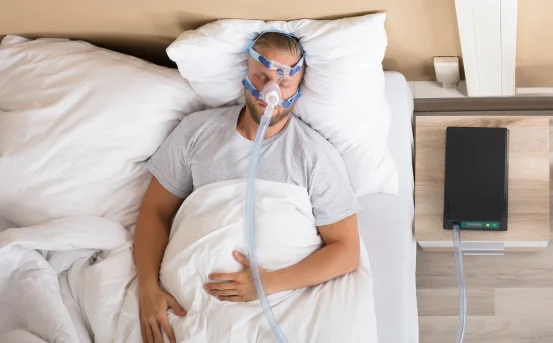Skin biopsy is a common and essential medical procedure used to diagnose various skin conditions, from infections to skin cancers. Whether you’re experiencing a suspicious rash, a mole that has changed in appearance, or an unexplained skin lesion, a skin biopsy may help determine the exact cause.
Your skin is your body’s largest organ and it can often give early warning signs of what’s happening inside. From unusual rashes to moles that change shape or color, skin issues can sometimes signal deeper health concerns. While many skin conditions are harmless and easily treated, others may require closer examination to rule out serious diseases, including skin cancer. This is where a skin biopsy plays a vital role.
What is Skin Biopsy?
A skin biopsy involves the removal of a small sample of skin tissue, which is then examined under a microscope by a pathologist. The goal is to obtain a clear and accurate diagnosis, especially when visual inspection alone is not enough.
Skin biopsies are usually performed by dermatologists or general practitioners under local anesthesia. The tissue sample is sent to a laboratory where it’s processed and evaluated for signs of skin diseases, infections, inflammatory conditions, or malignancies like melanoma.
Why is a Skin Biopsy Done?
Doctors recommend a skin biopsy for various reasons. Some of the most common include
-
To diagnose skin cancers such as melanoma, basal cell carcinoma, or squamous cell carcinoma.
-
To investigate persistent skin rashes or lesions.
-
To diagnose inflammatory or autoimmune skin disorders like psoriasis, lupus, or dermatitis.
-
To identify infections such as fungal, bacterial, or viral conditions.
-
To monitor a known condition that may be changing or worsening.
A skin biopsy provides a definitive diagnosis, which guides the next steps in treatment or management.
Types of Skin Biopsy
There are different techniques for performing a skin biopsy, depending on the size, depth, and nature of the suspicious skin area. The three main types are
- Shave Biopsy :- In this method, the doctor uses a small blade to shave off the top layers of the skin. It is generally used for raised skin lesions or when only a superficial sample is needed. Stitches are usually not required after this type of biopsy.
- Punch Biopsy :- A punch biopsy involves the use of a circular tool to remove a small, cylindrical piece of skin that includes deeper layers. It’s ideal for diagnosing conditions that affect the deeper layers of the skin and may require stitches afterward.
- Excisional Biopsy :- This is a more involved procedure in which the entire lesion or affected area is removed, often with a margin of normal skin around it. It is usually performed when a larger or potentially cancerous lesion needs complete removal. Stitches are typically required.
What Happens During a Skin Biopsy?
Before the biopsy, the healthcare provider will discuss the procedure with you, including any risks, and ask about your medical history, allergies, and current medications. You may need to stop taking certain blood thinners or medications temporarily.
The area to be biopsied is cleaned with an antiseptic solution, and local anesthesia is injected to numb the skin. Once numb, the doctor will perform the biopsy using the appropriate technique. The procedure usually takes only 15 to 30 minutes.
After the sample is collected, the site may be closed with a stitch or covered with a sterile dressing. The tissue is then sent to a pathology lab for analysis.
Aftercare and Recovery
Post-procedure care depends on the type and depth of the biopsy. In general, you should
-
Keep the area clean and dry for at least 24 hours.
-
Avoid strenuous activity that may stretch or irritate the area.
-
Follow your doctor’s instructions for wound care and dressing changes.
-
Watch for signs of infection such as redness, swelling, or pus.
Mild discomfort, redness, or slight bleeding may occur, but these usually resolve quickly. If stitches were placed, they may need to be removed after 7–14 days depending on the biopsy site.
Are There Any Risks?
Skin biopsy is a safe and routine procedure, but like any medical intervention, it carries some potential risks. These include
-
Bleeding or bruising at the biopsy site
-
Scarring
-
Infection
-
Allergic reaction to local anesthesia
-
Temporary numbness if nerves are affected
Most complications are minor and manageable with proper care. Always report any unusual symptoms to your doctor promptly.
How Long Do Results Take?
Once the tissue sample reaches the laboratory, it may take anywhere from a few days to a couple of weeks to receive the results. The turnaround time depends on the complexity of the test and the workload of the pathology lab.
Your doctor will contact you once the results are available and explain the findings. If further treatment or additional testing is required, they will guide you on the next steps.
What to Do if You’re Nervous About the Procedure?
It’s perfectly normal to feel anxious before a skin biopsy. Understanding what the procedure involves can help reduce that anxiety. Talk openly with your doctor about any concerns, such as fear of pain, scarring, or results.
Most patients are surprised at how quick and painless the procedure is. With local anesthesia, you should feel little to no pain during the biopsy. Taking a friend or family member along for emotional support can also be helpful.
When Should You Consider a Skin Biopsy?
If you notice any of the following skin changes, it may be time to consult a dermatologist who might recommend a biopsy
-
A mole that changes in size, color, or shape
-
A persistent, non-healing sore
-
A new skin growth that appears unusual
-
Chronic rashes that don’t respond to treatment
-
Painful, scaly, or itchy patches of skin
-
Pigmented or bleeding lesions
Early diagnosis often leads to better treatment outcomes, especially in cases of skin cancer.
Conclusion
A skin biopsy is a vital diagnostic tool that helps uncover the cause of unexplained skin conditions or suspicious lesions. It is a safe and quick procedure with minimal downtime, offering invaluable insights for effective treatment. If you have any skin abnormality that concerns you, don’t delay consult a qualified dermatologist to determine if a skin biopsy is the right step.























